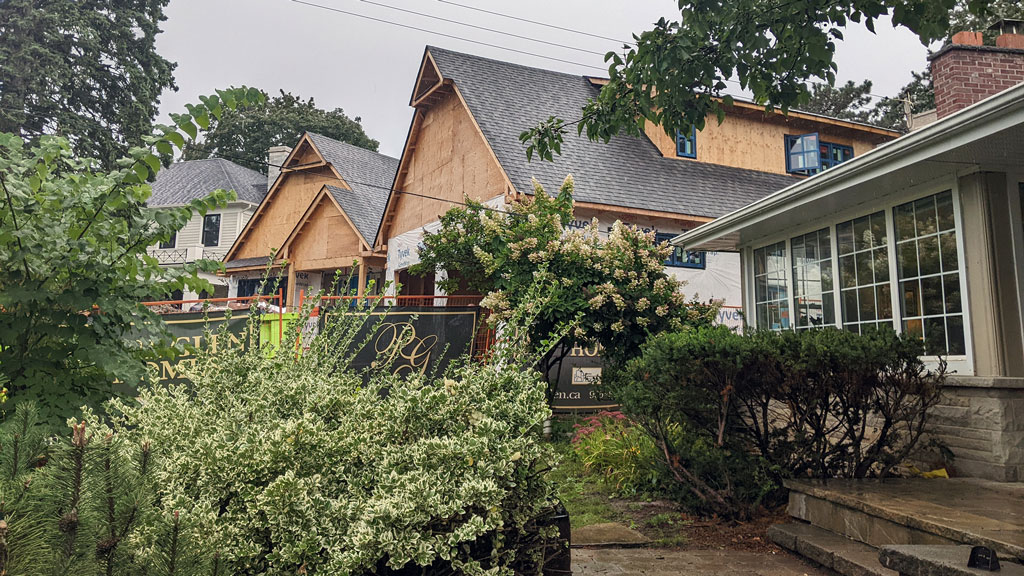Canada’s quest to build more missing middle housing in cities will miss the mark if policy-makers do not include measures to inject affordability into the equation, suggest city-building experts from Toronto.
City Building TMU (Toronto Metropolitan University) and the School of Cities at the University of Toronto recently joined forces to develop a Charter for Affordable and Equitable Gentle Density, offering a set of non-disruptive and practical strategies that could be adopted by all three levels of government to incorporate affordable units into existing single-family neighbourhoods.
Up to 200,000 new affordable missing middle units could be created in Canadian cities by 2030, the report states.
City Building TMU executive director Cherise Burda, the report’s author, said municipalities need to do more than reform zoning laws to ensure new infill units built in low-rise neighbourhoods are affordable.
“It’s the start of a conversation around how we make the missing middle actually affordable and equitable, because current efforts aren’t doing it and we don’t want to just say it’s not working,” explained Burda. “We want to actually offer some solutions… that are the beginning of looking at a way forward.”
The missing middle refers to a range of multi-family housing types that are compatible in scale with existing single-family neighbourhoods. Often razing single-family homes to the ground and building multiplexes is envisioned. The City of Toronto has introduced laneway and garden suite programs and is presently developing its multiplex policy.
The charter’s authors suggest municipalities need to take steps to nurture “gentle density” small-scale projects by optimizing single parcels of land and finding ways to convert basements, retrofit garages, add one or more units to a principal dwelling or converting a principal dwelling into a duplex or triplex or more.
The report identifies potential changes at all levels. A new municipal portal could be created for homeowners to access municipal conversion specialists, contractors and architects and link to pre-approved designs for various housing typologies designed for quick turnaround.
Provinces could implement as-of-right fourplex zoning in single-family neighbourhoods and reform building codes.
And the federal government could reorient its National Housing Strategy to provide additional focus on low-cost loans, tax breaks and other financing mechanisms to encourage homeowners to add to the missing middle housing pool.
Burda said even in cities where the zoning has already been changed, such as Minneapolis, there is not a lot of uptake among homeowners because undertaking conversions or rebuilds is a very complex, onerous process.
“When you partner with somebody else, the cost of land goes into the equation, and then there’s development charges, there’s permitting fees. There are all of these costs at the end of the day, then there’s this really disruptive level of construction that takes place on someone’s property for a long period of time,” she said.
The charter said the municipal “one-stop shop” could transform zoning desk culture from punitive to supportive and develop an intermediary industry to manage the approval, development and rental processes for homeowners. Funding could come from the National Housing Strategy.
Reforming municipal bylaws could ease restrictions such as parking regulations and support aging in place. And municipalities, using new National Housing Strategy rules, could set affordable rental rates in exchange for tax credits and construction grants for homeowners.
The expanded focus of the National Housing Strategy could free up funds currently dedicated to large apartment complexes. Architect Michael Piper, who contributed to the charter, coined the phrase the “missing little” to describe the new focus that could be placed on promoting small infill housing projects.
“The federal government is going to have to put some skin in the game here and they need to redirect some of their funding that isn’t translating into building a lot affordable housing,” said Burda.
“It’s going to help the homeowner, it’s going to help local labour, it’s going to help the climate because it’s going to be less carbon intensive to do this, it’s going to help with sprawl. There’s so many benefits to this.
“Not to mention those people who could move into affordable units a lot faster right now in Toronto. There’s up to a 12-year wait to get into social housing.”
Follow the author on Twitter @DonWall_DCN











Recent Comments
comments for this post are closed